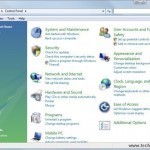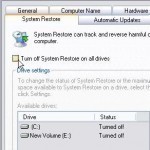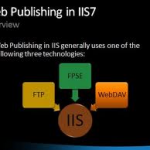The Quick Launch toolbar is a quick and convenient way to open programs that you frequently use. It is located on the taskbar. You can easily add to or remove shortcut icons of your favorite programs from the Quick launch toolbar. You can also just as easily add or remove the Quick Launch toolbar. To add or remove the Quick Launch toolbar: Right-click in an empty area of the taskbar. Point to toolbars. Click Quick Launch. A checkmark will appear to show that the Quick Launch toolbar is visible on Read More
How to Use the Windows Vista Activation Wizard
In order to functionally activate Microsoft Windows Vista OS versions using the Windows Vista activation wizard, you need to do the following: Click on the Start button found on the leftmost bottom portion of the desktop Click on the Computer option from the selection Then click on Properties from the list of options Click on the Click Here option in order to functionally activate your Windows Vista OS version (please be advised that in order to do this, you would need to have administrator permission privileges) Afterwards, you can key Read More
usbehci.sys

Usbehci.sys is a USB controller driver for Windows XP Service Pack 1. Usbehci.sys is a required file that manages USB ports and Plug-and-Play services. While Usbehci.sys should be included in any Windows Operating System installation, this file is often missing and may prevent the user from installing Windows XP properly. Usbehci.sys runs exclusively on the Windows Operating System and can be found in the Drivers subfolder of the primary hard drive’s System32 folder. How Usbehci.sys Works Usbehci.sys is the software component that allows the computer to run its USB Read More
What is the Windows Registry?

The Windows registry is a database that Microsoft designed to store configuration settings and options for the operating system (OS). It increases OS speed and also contains settings for hardware components, end-users, and system software to help ensure that the highest possible quality of service is delivered to th user. The registry is used as an entrance point or gateway for the Windows OS kernel and has been in use for a number of years. Although significant improvements have been made to the registry, it is still susceptible to getting Read More
How to Uninstall a Program in Windows Vista & Windows 7

Uninstalling a program in Windows Vista and Windows 7 is a fairly simple process: 1) Select the Start Button/Windows button on the taskbar (commonly located on the lower left corner of the screen). The start menu will appear and show a variety of options. 2) Select the “Control Panel” option, which will open up either: A drop down list with the control panel contents or The control panel window 3) If the drop down list appears, find the “Programs and Features” option on the list. If the Control Panel window Read More
How to Turn Off System Restore

System Restore is a feature included in the Windows Operating System that lets the end-user create points that are “known good” which can be restored to in the event of a catastrophic event occurring on the computer. These events can result from a failure or crash of the operating system due to infection by computer malware or incompatibilities from new software programs installed on the PC. Many times, a user will be required to disable or turn-off system restore on the computer before removing software applications in order to prevent Read More
Publishing Content to IIS

Publishing Content using WebDAV You can use Web Distributed Authoring and Versioning (WebDAV) to manage and publish content such as HTML files, ASP pages, scripts and executables, to IIS. You can use WebDAV to create and modify web content on Internet servers. WebDAV utilizes the port 80. This is the default used by HTTP. By default, WebDAV is not installed, nor enabled in IIS 6. How to install WebDAV Click Start, Control Panel, and click Add/Remove Programs. Click Add/Remove Windows Components in the Add Or Remove Programs dialog box. Click Read More
Planning a Group Policy Strategy
On Overview on Group Policy Before you can consider to even begin planning a Group Policy implementation in your organization, you have to understand a few important aspects of Group Policy. Microsoft initially introduced group policies in Windows NT to assist administrators in managing the desktop configuration settings of users and computers. Windows Server 2000 included hundreds of Group Policy settings which you could configure. Windows Server 2003 offers all the group policies included with Windows 2000 as well as more group policies, which enable you to use new Windows Read More
How to Boot in Safe Mode
The safe mode boot option was first introduced with Windows 95. It is a problem-solving mode of an operating system. Safe Mode and other Safe Boot options menu can be accessed by pressing the F8 key on the keyboard, while the computer is restarting. What is Safe Mode? When the operating system fails to boot normally, safe mode can help you identify and resolve the issues that are preventing the OS from working normally. Issues that need booting to safe mode are typically major ones, such as disk corruption, installation Read More
Configuration of Windows Login Interface
The level of access that one has to his/her Windows machine depends on whether the Windows Login interface is enabled or disabled. When the logon screen is enabled, the user is prompted to select an account username and put in a password for the account selected. This allows users to access a single computer via many accounts when it has been preconfigured for this purpose. Individuals who are the sole users of their computer prefer to disable the Windows logon screen. They may also use a single account and therefore Read More


Share on: